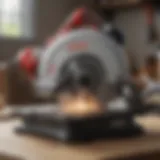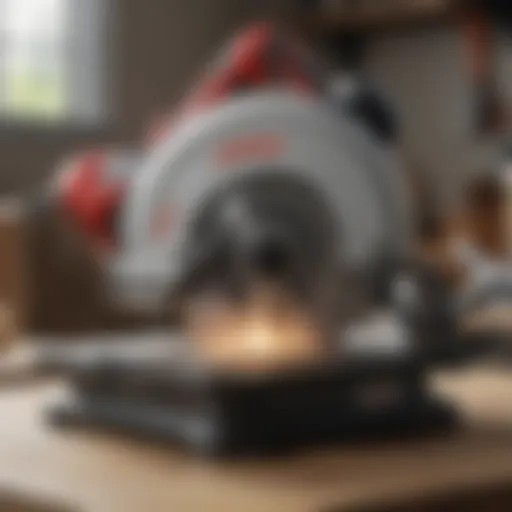Complete Guide to Egress Window Installation Steps
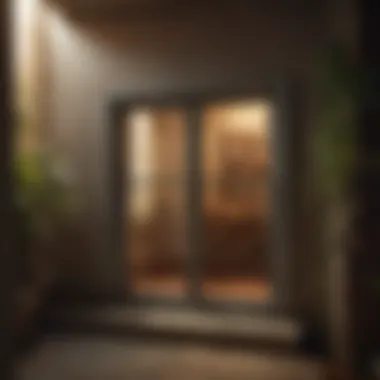

Intro
Installing an egress window is a significant home improvement project, equal in importance to upgrading a kitchen or remodeling a bathroom. An egress window is not merely an architectural feature; it serves as a vital escape route in emergencies, typically in basements or below-grade living spaces. Homeowners increasingly recognize their necessity for safety, legal compliance, and potential property value enhancement.
The need for proper home ventilation and natural light elevates the relevance of egress windows even further. By creating additional exits, these windows also open possibilities for utilizing spaces more fully, thus increasing usable square footage in a home. It is essential to grasp the underlying factors surrounding egress window installation—such as code requirements and environmental concerns—to achieve both functionality and safety.
For occupants, feeling secure is of utmost importance. Having an egress window not just provides safety; it can fundamentally alter one's relationship with their living environment. Knowing that a safe exit exists may help to alleviate anxiety.
In this guide, you will gain insight on how to navigate the complexities of putting in an egress window from initial planning steps through to completion. Numerous challenges may arise, and being adequately prepared can empower homeowners to tackle issues efficiently and effectively.
Understanding Egress Windows
Definition of Egress Window
An egress window is a specific type of window that provides a clear escape route in case of emergencies. Commonly found in basements or sleeping areas, these windows offer an exit leading outside, and they meet certain size and opening requirements as established in various building codes. When discussing egress windows, one must understand their essential role in enhancing safety through accessibility during critical situations.
Importance of Egress Windows
Egress windows serve several objectives crucial to maintaining safety and compliance in residential areas. Understanding their importance is fundamental for homeowners.
Safety in Emergencies
Addressing safety is paramount. Egress windows facilitate quick evacuation during fire or any emergency by allowing individuals to exit without obstruction. A major benefit is the size and accessibility criteria established by safety regulations, which help to prevent entrapment.
While directly related to safety, proper installation ensures that these windows not only serve their purpose in urgency but also fit seamlessly into the design of the home. Therefore, their effective placement saves lives by offering peace of mind.
Legal Requirements
Navigating the legal obligations surrounding egress windows is critical for homeowners and builders alike. Most regions require egress windows to meet specific code regulations concerning their size, depth from the floor, and accessibility. Knowing these regulations is a key factor that contributes to the safety of the structure.
Compliance with building codes keeps not only residents safe but also ensures property value over time. Furthermore, understanding these requirements can prevent prospective legal issues should an inspection arise. It confirms that all newly installed windows adhere to standards necessary for safety and functionality.
In many jurisdictions, choosing to install egress windows without following the local building codes can lead to fines, additional costs, and potential hazards during emergencies.
Utilizing accurate information regarding legal requirements helps guide a thoroughly planned installation process, making it essential for any successful renovation or building project. Understanding both the safety and legal components of egress windows is undeniably important.
Local Building Codes and Regulations
Local building codes significantly impact the installation of egress windows. These codes govern how housing structures should comply with legality, safety, and structural integrity rules in specific localities. Egress windows are essential components for safety in buildings, especially in basements. Ignoring or bypassing local codes can lead to unsafe situations and costly legal issues. It is critical to understand the obligations and conditions specific to your area to ensure not just compliance, but the safety of your home.
Understanding Local Codes
Local building codes vary by region but generally dictate the size, placement, and safety features of egress windows. Below are some common aspects of these codes:
- Window Size: Egress windows must meet minimum size requirements to ensure adequate escape routes. Commonly, they have to be at least 5.7 square feet in area.
- Installation Height: Thresholds of egress windows often need to be positioned at or below a specific height relative to the ground outside to ensure easy access.
- Accessibility: A clear path from the window to the outside world must be established and maintained.
These stipulations are in place to assist homeowners in providing safe escape routes and ventilation in emergency situations.
Obtaining Necessary Permits
Application Process
The application process is a critical step for moving forward with the egress window installation. Typically, homeowners submit their plans and details to the local permitting authority.
- Application Components: The application usually requires site plans, structural designs, and possibly engineering data. Completing this aspect accurately is essential for approval.
- Importance: Obtaining a permit is required to ensure that installation adheres to local and state requirements, promoting safety and preventing encounters with the law.
- Unique Feature and Benefits: A crucial aspect of the application process is the detailed scrutiny of the structure's intended use. This examination helps avoid potential renovation issues later. Following this structured way ensures timely work ensures reliability issues or delays can be mitigated.
Inspection Requirements
Inspection refers to the process wherein local officials may assess whether the egress window meets set standards. It is generally seen as a progressive step after installation.
- Frequency and Type of Inspections: Depending on the local codes, one may expect various inspections: rough inspections prior to wall closing and final inspections after completion are common types.
- Key Characteristic: A major characteristic of inspections is the reassurance of safety measures. The evacuational aspect is crucial; thus, this step distinctly endorses compliance.
- Unique Feature and Errors: The inspection identifies any issues within compliance, furnishing protections for future inhabitants. Should discrepancies occur during inspections, they may lead to costly changes or adjustments, emphasizing meticulous attention to codes throughout installation.
Understanding local building codes and securing necessary permits culminate as crucial steps in ensuring a successful egress window installation. It affects installation practicality that impacts homeowner and occupant safety. Thus, knowledge and meticulous approach towards these guidelines is indispensable.
Planning for Installation
Planning for the installation of an egress window is crucial in ensuring its success. This phase involves careful consideration of several pivotal elements. Mistakes made at this stage might not just hinder the installation process but can also create safety risks and additional financial burdens down the line.
The first step is selecting an appropriate installation location. A perfect spot enhances both function and aesthetics, integrating well with your home’s existing architecture. Additionally, understanding how to measure accurately for the window is essential. Inaccurate measurements can lead to windows that do not fit or adhere correctly to local codes, negating their purpose.
Moreover, the type of window you choose will significantly impact the overall quality of your installation. Choosing the right window ensures not only compliance with safety requirements but also that you receive the benefits that come with a reputable installation. Therefore, careful planning is not simply advantageous; it is essential.
Selecting the Installation Location
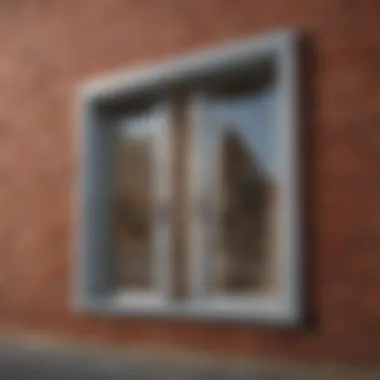

Choosing the installation location for an egress window requires more than just preference. Several considerations affect decision-making. Begin by assessing zones where you can achieve maximum energy efficiency and aesthetic appeal. An ideal site usually falls in a location that allows ease of access and does not interfere with foundation support or plumbing.
It is also essential to ensure that the chosen location adheres to the building safety codes in your area. Most codes specify that an egress window has to be located in specific proportions from existing structures, so you’ll need to familiarize yourself with these before moving forward. Site conditions, such as moisture levels and drainage patterns, should also be taken into account as they can influence performance.
Measuring for the Window
Accurate measurements can save you a great deal of time and effort later on in the project. Initially, record the dimensions of the wall where the abnormal and uneven surface levels could affect accuracy. Take note of the height, width, and depth requirements as prescribed by local codes. This part is meticulous work but necessary for obtaining the correct egress window size.
Sometimes, it may be necessary to account for the framing around the window, which could add to the overall size. Correcting wrong measurements later might result in wasted materials and added expenses. Therefore, record similar sizes twice before possible translations into purchase orders.
Choosing the Right Window Type
Choosing the right type of egress window is essential, impacting both appearance and safety. Numerous options exist; hence knowing your needs helps narrow them down.
Window Styles
When considering window styles, functionality and aesthetic considerations should guide your choice. Common styles include sliding, casement, and double-hung windows. These types offer particular benefits. For instance, casement windows open outwardly, providing excellent ventilation alongside superior access during an emergency. This provides you more security hairview before reliance in a strong breakout or exterior bulkhead.
Furthermore, sliding windows offer a space-efficient design; durable protection rolls any concerns the installer might have.
Material Considerations
Material used for construction additionally influences the performance and lifespan of an egress window. The most common materials are vinyl, wood, and fiberglass. Each offers distinct perks. Vinyl is typically affordable and excels in low maintenance; however, wooden frames lend a classic appeal at a premium price.
Conversely, fiberglass offers resilience though limited in styles relative to wooden or vinyl options. The importance of choosing high-performance materials is irrefutable, as they contribute to long-term integrity. These samples tell maintain quality, proliferating through an involved range of factors over extended time—preferably excluded in initial acquisition, ensuring perpetual long-term fittings for residents.
Tools and Materials Required
Before initiating the installation of an egress window, it's crucial entender the tools and materials required. Having the right supplies can streamline the process, ensuring not only efficiency but also safety. The instrumental tools and quality materials contribute significantly to the overall success of the project. This section will detail the essentials for a smooth installation.
Essential Tools
When tackling the task of installing an egress window, the tools at your disposal can either simplify or complicate the process. Essential tools are categorized as fundamental instruments or mechanisms employed to accomplish various tasks during the window installation.
Saw Types
In our installation guide, the correct saw type is critical. Circular saws, for example, provide precision when cutting through stronger materials like concrete and wood, an aspect that cannot be overemphasized for durability and safety in your installation. Using the right saw types minimizes erroneous cuts and protects partial structures during the project.
A circular saw, recognized for its speed and efficiency, is often a beneficial choice. It is designed to handle thicker materials with greater ease, which can leave a clean edge that is necessary for proper fit and function. This unique feature reduces post-cutting work, as it minimizes the time spent on cleanup and edge refinement. However, one should note the potential for requiring extra care, as these powerful tools don't offer much margin for error.
Drills and Fasteners
Additionally, drills and fasteners play a crucial role in both the preparation and fixation stages of window installation. A suitable drill ensures efficient penetration through various materials used in window structures, allowing for successul securement of fasteners. These fasteners themselves act as the unsung heroes that hold every piece together.
A key characteristic of drills you should consider is torque settings. Drills providing variable torque settings allow for versatile application. Consequently, the adjustability enhances user control, preventing overtightening that can damage materials. When combined with high-quality fasteners, the choice culminates to longevity and robustness, while, unfortunately, cheap alternatives promote compliance failure and reduce overall effectiveness.
Materials Needed
Selecting proper materials is just as crucial as choosing your tools. In the realm of egress window installation, curated materials speak to security and readiness. Each component plays a specific role in sustaining structure integrity throughout the time.
Window Frame
Before diving into installation, investing in a superior window frame merits serious tiime. A frame, designed using sturdy materials, provides the essential support necessary to maintain overall safety standards. Different materials present distinctive benefits—vinyl frames offer durability and low maintenance requirements, while wooden ones bring in aesthetic charm and decent insulation.
The unique feature in modern frames is weather-resistance; this characteristic optimizes insulation conditions, ensuring the end result manages temperature fluctuations gracefully. However, lower-quality framing can compromise this insulation layer, leading to potential temperature instability in the room.
Sealing and Weatherproofing
Moving forward, sealing and weatherproofing play paramount importance in preventing water infiltration once the egress window is in place. It encapsulates leaks, preserving tranquility during harsh weather. This ease of installation presents sealing agents as steady performers in your laminated approach to window integrity.
One of the benefits of weather-resistant materials lies in anti-mold attributes, reducing long-term maintenance headaches for homeowners. Great proper sealing products often consist of sealing tape or caulk that are notably straightforward to apply, promoting user control. Nevertheless, failure to select appropriate sealing can cause split seams that create problems further down the line.
In summary, the tools and materials selected largely define the direction and efficiency of your installation project. Morty, as you prepare for the task, focus on the quality of tools like saws and drills and comprehension of the materials such as window frames and sealants. This foundational knowledge will lay the groundwork for swift, effective installation and ultimately enhance the overall integrity of your home.
Step-by-Step Installation Process
This section elaborates on the step-by-step installation process for an egress window. By dissecting each phase, readers can appreciate how crucial attention to detail is. This method lays the groundwork for a smoother installation experience. Each step needs to be considered carefully not only for functionality but also for safety and compliance with local codes.
Preparing the Site
Clearing the Area
Clearing the area is an essential first step before any installation can take place. This involves removing obstructions such as plants, lawn furniture, or debris. The key characteristic of clearing the area is to establish a safe, accessible workspace. Ensuring this space is free of obstacles contributes significantly to improved efficiency during installation. A clean site prevents errors and miscalculations that could negatively impact the installation process.


One unique feature is the ability to quickly assess measurements without the distraction of clutter. A decisive choice here is critical; a well-prepared area minimizes risk. However, one should be cautious around underground utilities and marked lines while clearing the site.
Safety Precautions
Safety precautions encompass a slew of measures that must be considered to avoid injuries. Wearing suitable safety gear such as gloves, goggles, and steel-toed boots is vital. A noteworthy characteristic of safety precautions is their ability to safeguard against unforeseen hazards affecting both health and property during installation. Hiring professional help might be beneficial for those lacking confidence since, despite the confidence one may have, accidents can happen.
It is also crucial to ensure proper ventilation during any cutting or work involving power tools. One core advantage here is the long-term protection for all individuals involved, promoting an overall safer environment in the home. Proper planning lays the foundation for a successful outcome.
Excavating the Area for the Window
Techniques and Tools
Selecting the right techniques and tools is necessary when excavating for the window. This includes using shovels or power tools suited for digging. A key characteristic here is efficiency, as the right equipment allows for a more effective excavation. For example, using a post hole digger can be more suitable than traditional shoveling for clean, precise cuts.
Clients often utilize tools such as a rotary hammer and digging bars. They simplify tough processes. While investing in tools takes upfront time, they often guarantee better accuracy.
Proper Depth and Dimensions
Understanding proper depth and dimensions is a keystone in window excavations. Most local codes stipulate specific requirements for these factors, whereby the minimum depth should generally be 44 inches and width must exceed that of the intended window frame. A notable characteristic is the necessity to follow local regulations closely. This choice verifies both legality and effectiveness.
The unique feature is that the right dimensions provide ample clearance yet maintain structural integrity to avert foundational issues. Keeping in line with these regulations furthers the goal of structural security.
Creating the Opening
Cutting Techniques
Cutting techniques are quite significant as they establish how clean the opening is. Using tools such as cut-off saws gives a smoother finish, which reduces risk of structural compromise in adjoining walls. The clean-cut choice is foundational as it improves fit during the install phases. This proactive stance keeps everything aligned and avoids last-minute adjustments.
Moreover, optimized cutting minimizes the waste of bricks or crushed concrete, translating into both time and project cost efficiencies.
Cleaning Up Edges
Cleaning up edges promotes a finer finish and aids in proper sealing later on. The key characteristic of cleaning up edges is to ensure that no loose materials remain; this avoids injury and enhances fit. This attention to detail also makes it less likely for gaps to appear later on.
When using scrapers and brushes post-cutting, excess debris can be efficiently removed. These measures prevent issues down the line, ensuring everything aligns perfectly and preventing future complications.
Installing the Window Frame
Placement Guidelines
Placement guidelines provide specific criteria that must be adhered to during the installation of a window frame. Following all indicated levels and measurements from the local codes fundamentally improves the likelihood of a successful insert. Key distinguishing factors lie within the accuracy of leveling the frame, as an uneven mounting could lead to multiple future problems.
Using a level during placement results in fitting windows correctly, promoting optimization while adhering to efficiency.
Securing the Frame
Securing the frame proves indispensable in ensuring stability for the installed window. This involves using screws or anchors suitable for the material used in the walls. Specifically allocating screws commonly seen today serves to brace the frame tightly against shocks or outside environmental forces.
Choosing strong materials could make a significant difference. Failure to move forward energetically could reverse much of the measurements or leveling conducted earlier, inviting hassle or even replacement.
Sealing and Insulating
Sealing and insulating warrant attention because, apart from compactly fixing the set egress window, they ensure energy efficiency. Applying high-quality weather stripping and foam will reduce drafts and conserve heating and cooling. The unique aspect here involves not just safety, but the cumulative energy costs affecting monthly budgets.
Post-Installation Considerations
Post-Installation Considerations are essential for ensuring the success of the egress window installation project. After you complete installation, various factors could enhance functionality and sustain safety benefits. Reviewing how effectively the installation meets local building codes can safeguard against future issues.
The post-installation phase includes two crucial parts: inspecting the job and implementing final touches or any finishing work. Inspecting the work allows for corrections to any oversights. Final touches enrich the aesthetic appeal while ensuring the area around the window is practical.
Inspecting the Installation
The prioritization of inspection should be evident. Inspecting the window installation guarantees that everything is up to industry standards and works as intended. At this stage, dedicate time to evaluate the integrity of the frame, window placement, and sealing.
Pay attention to the following aspects during inspection:
- Sealing Integrity: Verify that the waterproofing and flashing is secure. This is vital in preventing water intrusion or damage.
- Window Functionality: Open and close the window to ensure it operates smoothly, as a functional egress window is critical during emergencies.
- Frame Damage: Check for any visible flaws or damage in the frame structure that may result from installation.
By being thorough in your inspection, potential issues can be addressed swiftly, reinforcing the investment made in your home.
Final Touches and Finishing Work
Reservation of effort for final touches post-installation is equally significant. Modifying the immediate area, whether inside or out, elevates the entire environment linked to your egress window. Here are two key areas to focus on:
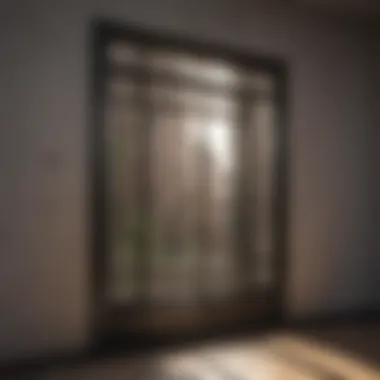

Outside Landscaping
Post window installation, outside landscaping takes precedence to finalize the aesthetic environment. Proper landscaping can help support water drainage and eliminate risk of soil erosion around the window. Key leads concerning outside landscaping include:
- Native Plants: Using local, drought-resistant plants minimizes maintenance and enhances moisture control.
- Placement: Run-off from nearby surfaces is a priority, which should cascade away from the home's foundation.
Efficient landscaping contributes to your overall home landscape image but directly impacts the longevity and durability of the window installation too.
Interior Finishing
Completing interior finishing tasks also merits attention for functionality. Ensuring that the surface trim and drywall integrally; draws the eye should matter in enhancing overall standards. Notates slash while ensuring compatibility of interior decor — satin or matte are options with unique advantages.
- Ventilation Consideration: Make space for window coverings. Proper window coverings can maintain privacy while permitting ample daylight to enter.
- Aesthetic Appeal: Select interior paint and decoration options that coordinate well with surrounding room attributes, ensuring seamless integration with traditional or modern themes.
Overseeing interior finishing complements your installation efforts, enhances aesthetics, and individualizes living space further. Such tasks solidify enhanced home environments coordinated with egress window performance whilst maximizing overall utility.
Common Challenges and Solutions
Installing an egress window can greatly enhance both the value and safety of a home. However, it comes with its own set of challenges. Understanding these potential obstacles helps homeowners prepare effectively. This section addresses common issues associated with egress window installation and provides solutions to overcome them. This knowledge aids in a smoother process, ensuring that the installation is not just successful but compliant with safety standards.
Dealing with Water Drainage Issues
Water drainage is critical when installing an egress window. Poor drainage can lead to moisture accumulation, which can create an environment for mold and rot. It is essential to assess the location for proper drainage before beginning the installation.
Here are important points to consider:
- Site evaluation: Check the grading around the site for proper slope.
- Drainage systems: Installing a French drain or a sump pump can be beneficial in preventing water accumulation near the window.
- Sealing joints: Ensure all seams are adequately sealed to prevent leakage.
Effective water drainage is not only crucial for the longevity of the window but also for the safety and health of the home. Regular maintenance post-installation is equally important to address potential water issues before they escalate into larger problems.
Addressing Structural Concerns
Structural concerns during an egress window installation often arise when insufficient support is present, particularly if modifying an existing wall. Whether you are replacing a window or cutting a new opening, understanding the support required is vital.
Support and Reinforcement
When adding an egress window, properly supporting existing materials is important. The key characteristic of adequate support and reinforcement is ensuring structural integrity without bulk. This often involves integrating a header into the design. Using engineered lumber for headers provides strength in a weight-efficient manner. It is a popular choice due to its durability whilst minimizing alterations to the building's load.
Advantages:
- Maintains overall stability of the wall.
- Allows for resizing the opening without compromising structure.
Disadvantages:
- May require professional installation, thus increasing cost.
Foundation Issues
Foundation concerns can arise depending on the specific conditions of the site. A major aspect to consider is how the foundation is affected when a new window is being instaselled. Understanding soil stability and load-bearing capabilities is critical.
The unique feature of addressing foundation issues is that it ensures the reliability of structural elements that bear your home. Employing professionals for assessing these is beneficial as they can provide critical recommendations based on unique soils or existing issues. While addressing foundation concerns can be costly, neglecting them can lead to far greater expenditures later. Evaluate everything thoroughly before proceeding.
Advantages:
- Long-term peace of mind regarding structural integrity.
Disadvantages:
- Potential for high costs if major repairs are necessary.
In summary, careful planning and knowledge about common challenges such as water drainage, structural support, and foundation issues can ease the installation process yet ensure your home is safe and sound.
Ending
The importance of a concise conclusion cannot be understated within this article. It serves to reinforce pivotal insights, ensuring that readers walk away with the key concepts they need to recall when considering an egress window installation. A well-crafted conclusion gives closure to the topic and enables readers to summarize their learning experience effectively.
Summarizing Key Points
When reflecting on the entire article, several essential topics arise that warrant particular attention.
- Understanding Egress Windows: Establishes both the definition and safety significance, emphasizing the legal obligations homeowners must adhere to.
- Legal Codes: Details on local building codes and obtaining required permits highlight compliance which is critical in planning.
- Effective Planning: Selecting the right location, precise measuring, and choosing an appropriate window type are top priorities that ensure the success of the project.
- Necessary Tools and Materials: Identifying required tools, like various saws, hammers and simple materials guarantees preparedness for installation.
- Installation Process: Breaking down the entire workflow into steps, from site preparation to final touches, manages expectations about the physical labor involved.
- Post-Installation Insights: Encourages the need for inspections and finishing, framing a comprehensive understanding to conclude the technical work in your home.
- Challenges and Solutions: Addressing potential drainage issues and structural concerns establishes readiness to mitigate risks.
This summary of the key points encapsulates the main focus areas of this guide, and provides a pathway to revisit when the need arises.
Future Considerations
Looking ahead, there are important elements and practices to keep in mind regarding home modifications and maintaining egress windows:
- Regular Inspections: It is wise to periodically assess the installation for any signs of wear or seepage, promoting prolonged safety and functionality.
- Darkness Instincts: Keeping egress windows accessible and known to all household members is crucial should emergencies occur.
- Legal Updates: Keeping abreast of changes in local building regulations related to safety codes ensures that your installation remains compliant.
- Environmental Factors: Adapting strategies when dealing with moisture management, such as proper landscaping around the egress window area.
By mulling over these future considerations, homeowners not only maximize the benefits brought by egress windows but also inspire proactive maintenance practices that foster safety and durability in the long run.




